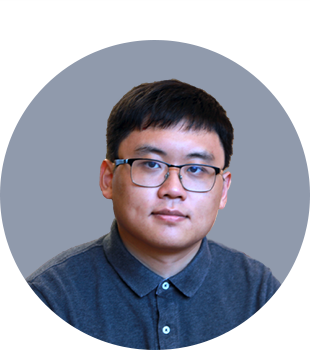As one of the hottest research topics in optics nowadays, optical frequency combs are among the most important components in precise metrology and have enabled a wide range of scientific and industrial applications. However, they used to be built on bulky, power-hungry, and expensive mode-locked lasers that can only function in laboratories, while mobile or airborne applications necessitate operation in much more complicated environments, including space.
To solve these problems, Qifan Yang, an assistant professor at Peking University, is committed to the study of high-quality nonlinear optical microresonators. He has developed miniaturized optical frequency combs, namely integrated microcombs, which can be integrated on photonic chips using standard CMOS techniques. His research focuses on developing devices and applications of integrated microcombs.
Yang had a keen interest in photonics while he was an undergrad, so during his Ph.D., he joined the research group of Professor Kerry Vahala, a leader in the field of optical microresonators, at the California Institute of Technology, and chose integrated microcombs as his research direction.
Yang was the first to generate mode-locked microcombs in various material platforms such as silica, lithium niobate, and low-confinement silicon nitride. Particularly, he demonstrated the first on-chip microwave-rate microcomb in 2015, which has been used in the assembly of miniaturized optical clocks and optical frequency synthesis.
To further leverage its integrity, in 2020, Yang created the first turnkey integrated microcomb chip based on a novel mechanism called self-injection locking. The resulting packaged device is ten thousand times smaller than a typical table-top optical frequency comb.
From an application perspective, Yang built a world-first dual-microcomb spectrometer, whose sensitivity, resolution, and acquisition speed are orders of magnitudes better than other miniaturized spectrometers. To further improve the coherence and reduce the complexity of this system, he came up with a method to generate dual microcombs in a single microresonator in 2017.
Based on such techniques, Yang invented an vernier spectrometer that combines dual microcombs and a tunable laser, which can resolve spectral features as narrow as kilohertz in frequency. This figure of merits has exceeded commercialized table-top spectrometers and wavemeters, indicating that integrated photonic devices could beat bulky optical instruments in performance.
In the process of developing integrated microcombs, Yang also implemented low-loss photonic chips, which can be widely used in quantum computing chips, high-power optical chips, and other equipment. These implementations have huge application potential in communications industry, precision manufacturing industry, and other fields.
After receiving his Ph.D. in 2019, Yang set himself on a research direction that focuses on the realization of chip-level fully integrated microcombs. In November 2020, he returned to his alma mater, Peking University, to set up a laboratory and work as an assistant professor. His main research direction is to develop photonic chips related to integrated microcombs and provide commercial-available high-performance coherent laser sources for integrated optoelectronics.




